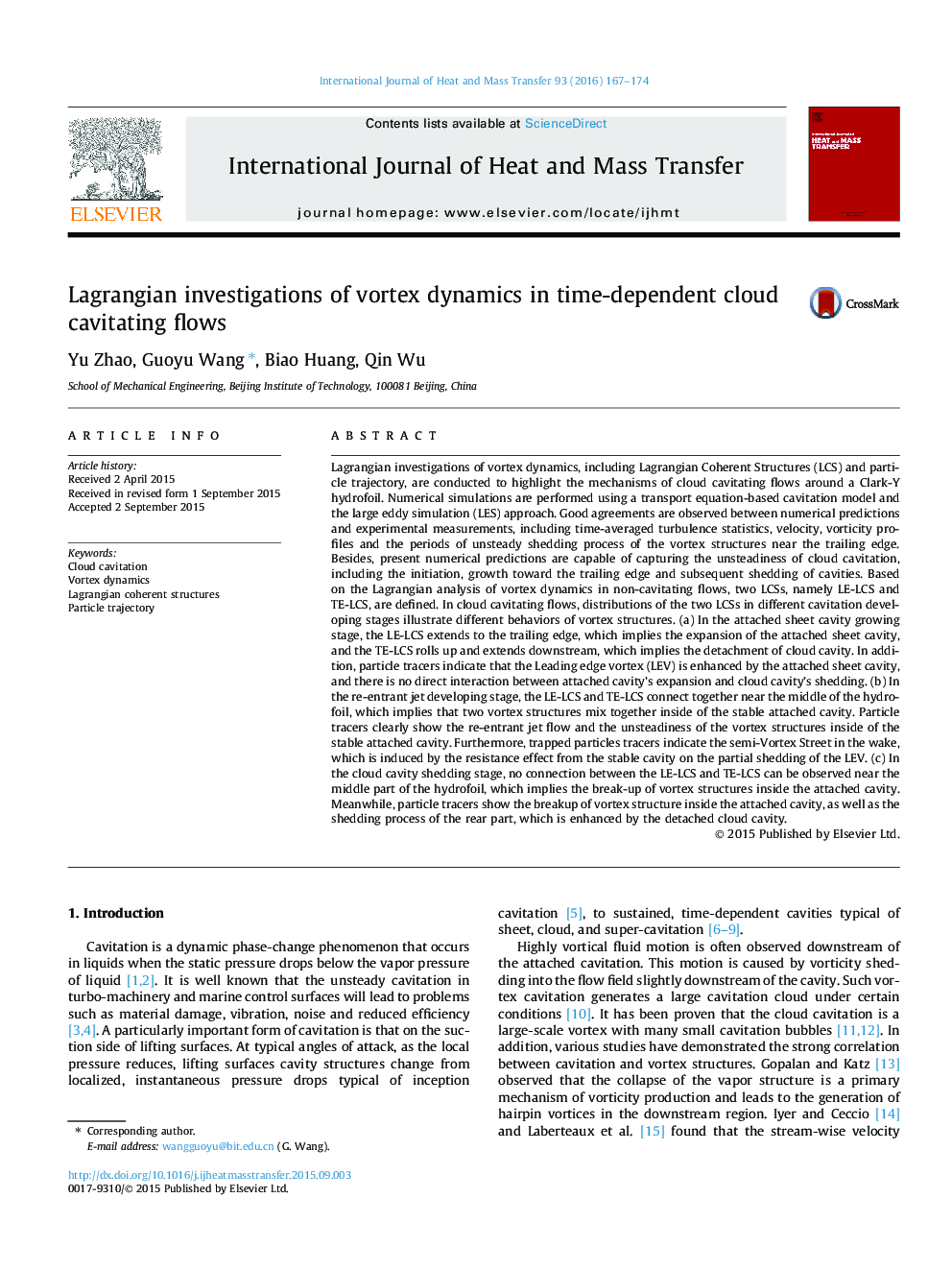| کد مقاله | کد نشریه | سال انتشار | مقاله انگلیسی | نسخه تمام متن |
|---|---|---|---|---|
| 7056038 | 1458049 | 2016 | 8 صفحه PDF | دانلود رایگان |
عنوان انگلیسی مقاله ISI
Lagrangian investigations of vortex dynamics in time-dependent cloud cavitating flows
ترجمه فارسی عنوان
بررسی لاگرانژی دینامیک گردابی در جریان های کاویتیویت وابسته به زمان
دانلود مقاله + سفارش ترجمه
دانلود مقاله ISI انگلیسی
رایگان برای ایرانیان
کلمات کلیدی
موضوعات مرتبط
مهندسی و علوم پایه
مهندسی شیمی
جریان سیال و فرایندهای انتقال
چکیده انگلیسی
Lagrangian investigations of vortex dynamics, including Lagrangian Coherent Structures (LCS) and particle trajectory, are conducted to highlight the mechanisms of cloud cavitating flows around a Clark-Y hydrofoil. Numerical simulations are performed using a transport equation-based cavitation model and the large eddy simulation (LES) approach. Good agreements are observed between numerical predictions and experimental measurements, including time-averaged turbulence statistics, velocity, vorticity profiles and the periods of unsteady shedding process of the vortex structures near the trailing edge. Besides, present numerical predictions are capable of capturing the unsteadiness of cloud cavitation, including the initiation, growth toward the trailing edge and subsequent shedding of cavities. Based on the Lagrangian analysis of vortex dynamics in non-cavitating flows, two LCSs, namely LE-LCS and TE-LCS, are defined. In cloud cavitating flows, distributions of the two LCSs in different cavitation developing stages illustrate different behaviors of vortex structures. (a) In the attached sheet cavity growing stage, the LE-LCS extends to the trailing edge, which implies the expansion of the attached sheet cavity, and the TE-LCS rolls up and extends downstream, which implies the detachment of cloud cavity. In addition, particle tracers indicate that the Leading edge vortex (LEV) is enhanced by the attached sheet cavity, and there is no direct interaction between attached cavity's expansion and cloud cavity's shedding. (b) In the re-entrant jet developing stage, the LE-LCS and TE-LCS connect together near the middle of the hydrofoil, which implies that two vortex structures mix together inside of the stable attached cavity. Particle tracers clearly show the re-entrant jet flow and the unsteadiness of the vortex structures inside of the stable attached cavity. Furthermore, trapped particles tracers indicate the semi-Vortex Street in the wake, which is induced by the resistance effect from the stable cavity on the partial shedding of the LEV. (c) In the cloud cavity shedding stage, no connection between the LE-LCS and TE-LCS can be observed near the middle part of the hydrofoil, which implies the break-up of vortex structures inside the attached cavity. Meanwhile, particle tracers show the breakup of vortex structure inside the attached cavity, as well as the shedding process of the rear part, which is enhanced by the detached cloud cavity.
ناشر
Database: Elsevier - ScienceDirect (ساینس دایرکت)
Journal: International Journal of Heat and Mass Transfer - Volume 93, February 2016, Pages 167-174
Journal: International Journal of Heat and Mass Transfer - Volume 93, February 2016, Pages 167-174
نویسندگان
Yu Zhao, Guoyu Wang, Biao Huang, Qin Wu,
